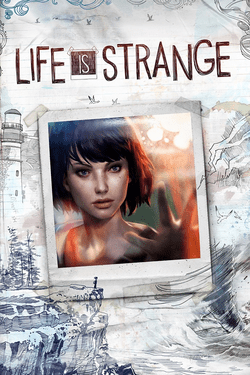
For this week’s Critical Play, I played Life Is Strange by Dontnod Entertainment. The game is available on basically every platform (Switch, PS4, Xbox One, iOS, PC, Mac, and more), and its target audience is primarily young adults. I say this because the themes that the game tackled were quite mature: dealing with mental health issues and a sense of coming of age in general, the story really resonates the most with people from the young adult age group. I also felt that there were several elements that made Life is Strange a very unique and compelling game to play. The most obvious is perhaps the mechanic of being able to rewind time to change your decisions and learn more about the environment around you. Through this mechanic, the game was able to develop interesting ways to intertwine its mysteries and its gameplay.
This is seen at all levels of the game, from its loops to its arcs. For example, several puzzles need to be solved by going back in time and preventing certain things from happening (such as an object blocking a doorway). This quickly establishes a mental model for the player that starts to depend upon this time traveling mechanic throughout the game. Yet, on a scale of interaction arcs, the time traveling mechanic was often used to re-do conversations with newfound information, and insightfully use the new information in ways to have different outcomes that progressed the story arc!
Other mechanics also made the game very interesting. For example, the fact that your choices have long lasting impacts on the story. It was interesting to see how the two mechanics above had great synergy with each other: if saying something caused a bad response from a friend, I could often choose to go back in time and say other things to get desired responses (and probably long lasting impacts into how I would play the rest of the game!!). Also, in a structural sense, the game really leaned into the importance of narrative, with the inclusion of several cutscenes and the decision to divide the story into chapters. It immersed the user in a narrative (and I can’t wait to keep playing).
Through these mechanics, the game took a great approach in achieving both narrative and Challenge Types of fun. Being able to go back in time and keep track of information was a refreshing experience to consider while trying to solve some fun puzzles. But also, having the sense of agency with seeing my decisions impact the cutscenes that I was being presented made me really fall in love with narrative games for the first time. This was further emphasized with its meticulous setting. Being set in Arcadia Bay, a small town in Oregon, and giving a lot of history to this town (especially events that happened before the game) was a crucial element in the game’s narrative. The town really exhibits a tight-knit community, with rich history, and environmental issues that create a backdrop that drives the story and character interactions. Honestly, I don’t think there were any failures to this game… Masterpiece 🙂




